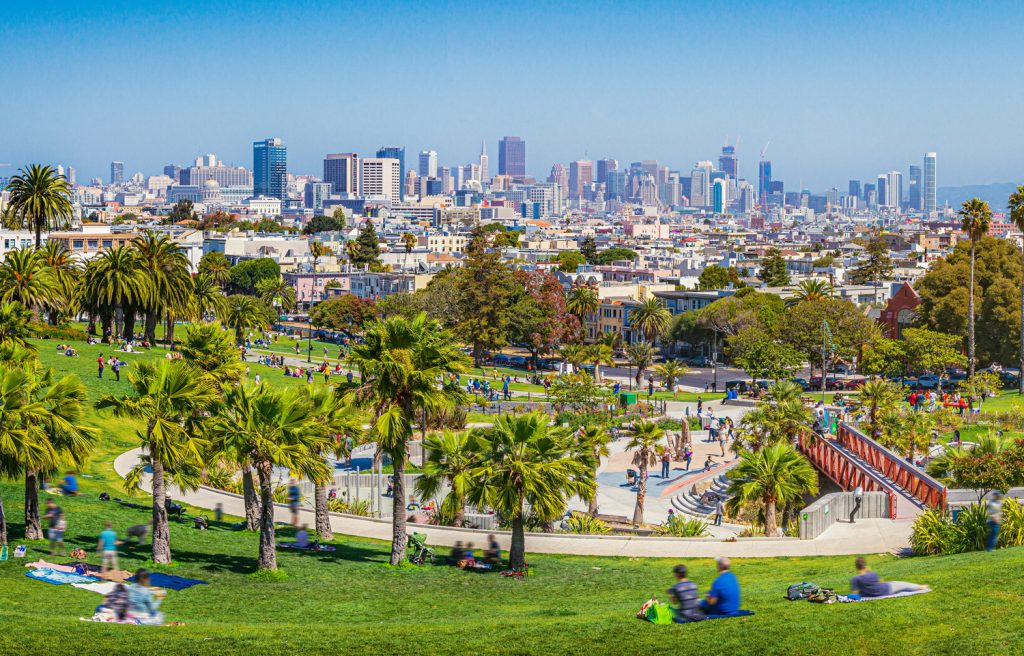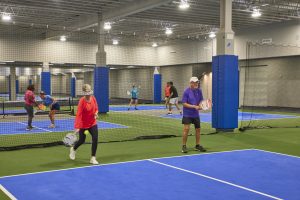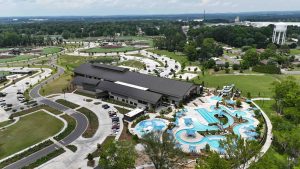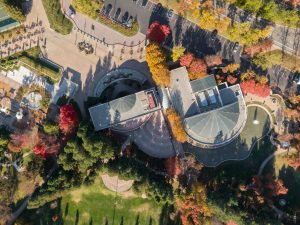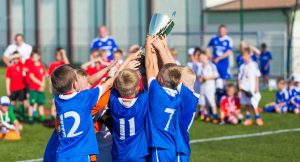Whether we focus on it or not, we all want to live in a healthy, vibrant community. And if we think about it, we know what that type of community looks like. It’s the type of community where people walk their dogs and greet their neighbors along the path. It’s a neighborhood where fitness is a priority and a long stream runners travel down grassy paths in the early mornings. It’s a place where children have plenty of opportunities for growth and outlets to burn off energy and make new friends. It’s a place that feels like a comfortable and safe home. And as we look at communities across the United States, it’s not surprising that the healthy ones have a thriving parks and recreation system.
The Importance of Parks and Recreation
There’s an overwhelming amount of data to support the impact of parks and recreation centers on municipalities. According to research by the National Parks and Recreation Association (NRPA), proximity to a park or recreation center correlates to higher physical activity levels in children and adults. The Trust for Public Land Center for City Park Excellence conducted a study on Seattle’s parks and recreation department that showed that residents who exercised consistently at these facilities realized over $64 million in savings on medical costs. Parks and recreation facilities have also been instrumental in helping those less fortunate. Annually, they feed over 560 million meals to children.
Better physical health, lower medical costs, and giving back to citizens are just a few of the ways that parks and recreation centers positively contribute to a healthy community. However, it goes beyond that. The addition of greenspace in urban areas can combat dangerous “heat islands” (urban areas that experience hotter temperatures that surrounding areas). For example, converting a parking lot to a park with trees, a walking trail and outdoor fitness equipment can provide a relief area as well as a fitness outlet.
Unfortunately, for as many communities that experience the positive outcomes of great parks and recreation centers, many more don’t. To combat this, municipalities must establish initiatives that address the factors that contribute to the overall health, wellness, and success of individuals and communities. Below are a few actions that can parks and recreation departments can take to enhance the impact of their assets and allow them to become tools for building healthy communities:
Let's create something today
Advocating for Parks and Recreation
While having tremendous statistics to support its importance, many parks and recreation departments are underfunded. Their budgets are often left on the chopping block in favor of more urgent community matters. However, a case needs to be made, through data, that parks are critical to fixing issues in cities. Other services, while important, may only be treating symptoms such as juvenile crime or homelessness, not the overall problem. At the Sports Facilities Companies, we’ve collaborated with organizations, including the CDC and state parks and recreation agencies to develop parks impact calculators. These calculators evaluate the impact of a parks and recreation systems and assets based on six areas that dictate community vitality, including health savings, public safety, and property values. We are currently working with parks and recreation departments throughout the country to implement these tools and use them to tell a compelling story about the need for more facilities.
Find a Community Champion
The person making the case for parks and recreation is as important as the case itself. A city official (a mayor or city manager, for example), must feel passionate about this solution and be willing to use her influence to have difficult conversations about issues facing their community. In having these conversations, they must be willing to provide long-term and short-term methods for enhancing city parks and recreation centers. While some of these community champions are elected, others must be enlisted. Coming to them with data and case studies for how parks and recreation assets have elevated similar-sized cities is crucial.
Getting the Community Involved
Those who benefit the most from a great recreation center should be the most fervent advocates. Unfortunately, that’s not always the case. Their interests are often focused on solving immediate issues, like road conditions. A case for parks must be presented to residents as well. They need to understand how tax dollars today can equate to a more physically and mentally fit community later. They also must see that this investment can drive higher property values. To gain community buy-in for improving or adding new assets, a focused campaign must be developed to connect residents with facility benefits, cast a vision, and build urgency. This campaign may include town hall meetings, advertising, social media, email components.
Improving Access to Parks
Sometimes, the issue is not the availability of parks and recreation centers, but proper access to them. Adding assets in places where an inadequate number of venues exist is a major solution. However, other solutions such as adding entry points and building bike trails that lead into parks are viable solutions as well. Also, reducing or eliminating fees for recreation centers can eliminate financial barriers for families.
To learn more about how the Sports Facilities Companies are helping build impactful parks and recreation systems, contact us at 727-474-3845.

